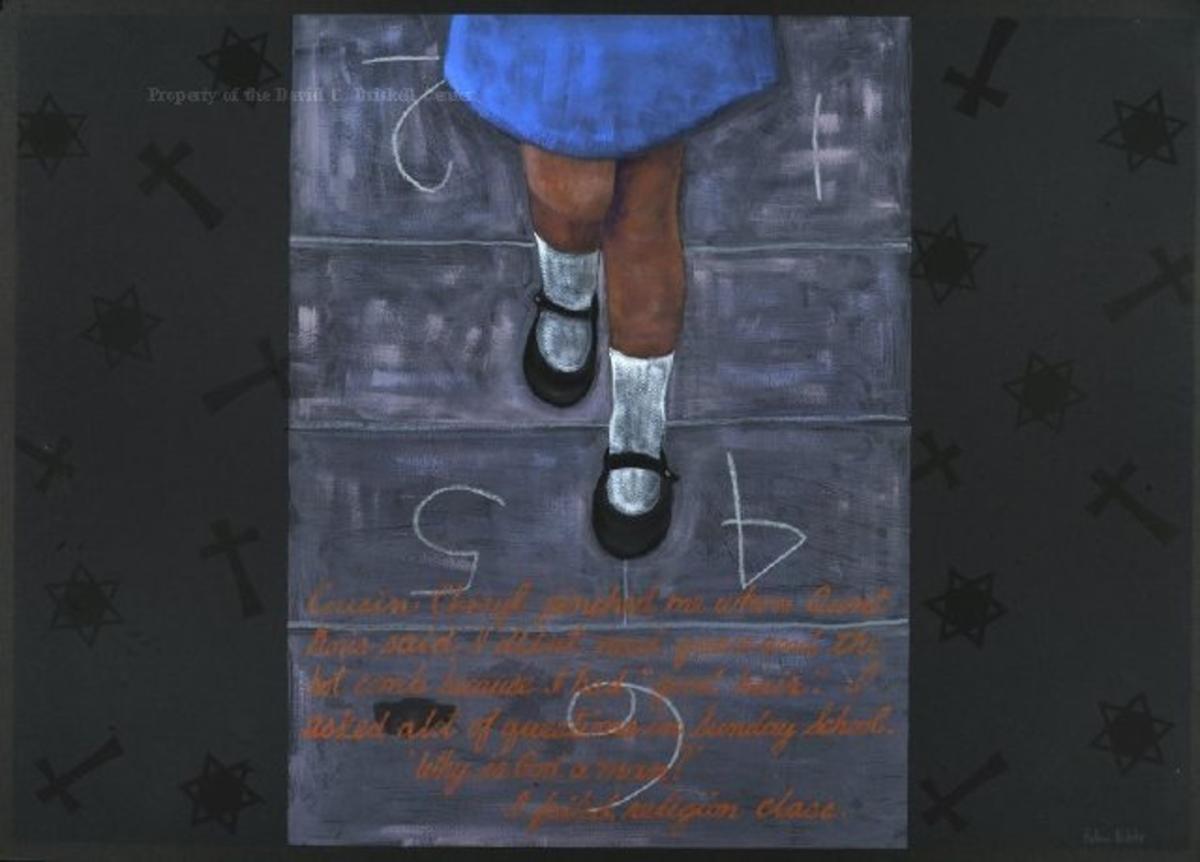I Failed Religion
( 1997 )
robin holder
The David C. Driskell Center at the University of Maryland, College Park, Gift of the artist

In I Failed Religion, artist robin holder communicates the tension of not neatly fitting into a singular racial, ethnic, or religious category. The work is from an autobiographical series of monoprints that look back at her childhood and adolescent experiences from the 1960s in Chicago and New York City as layered sites of identity formation. The series title, What’s Black White and Red All Over? An African American Russian Jewish Red Diaper Baby, a play on the classic newspaper joke, foregrounds holder’s biracial identity and the leftist politics of her upbringing.
Corresponding to her heritage as the daughter of a Black, Christian man and a white, Jewish woman, holder depicted crosses and Stars of David on the right and left sections of I Failed Religion’s composition. These symbols appear in low contrast against the dark gray paper support, which also serves as the background for the central image’s hopscotch board. Holder situates the viewer above the board, looking down on the figure of a little girl. Only the girl’s legs and Mary Jane–clad feet are visible, suggesting a youngster’s first-person perspective. Her foot lands on the line between the boxes for the four and five, a move that would cause her to lose this game.
On top of the image, holder wrote a text about her memories. One such memory concerned her hair, which her aunt described as “good hair” (indicating a bias for straight and smooth hair): a characterization that excluded holder from her African American family’s hot comb hair-styling ritual and incurred her cousin’s ire.[i] During this same period of her life, holder also failed a religious school class. She questioned and rejected the notion of God as male. In these recollections, holder found her young self at odds with elements of her own multifaceted identity. This sense of alienation stems from the pursuit of belonging and self-image in a country that, despite its diversity, often favors strict categorizations over nuances of identity.
Text by Abby R. Eron as part of the Out of Many Research Project
[i] Lisa Farrington, “Robin Holder,” in An American Consciousness: Robin Holder’s Mid-Career Retrospective, exh. cat. (David C. Driskell Center, 2009), 12. For more on the series, see Dorit Yaron, “What’s Black and White and Red All Over? The Work of the African-American Jewish Female Artist Robin Holder” (master’s thesis, University of Maryland, College Park, 2000).